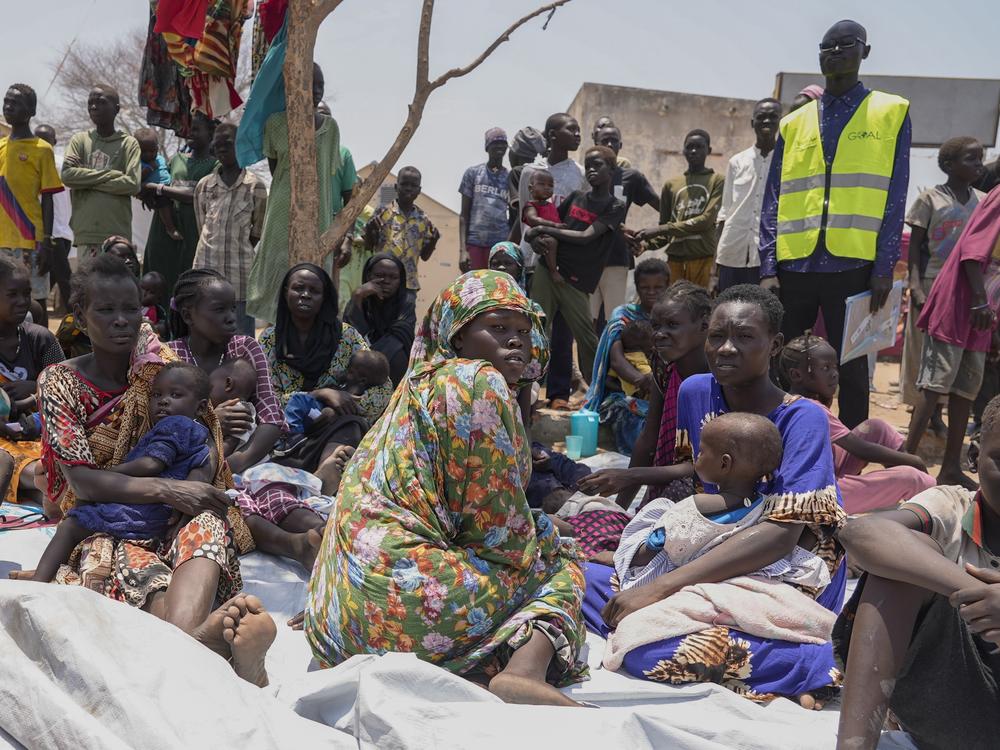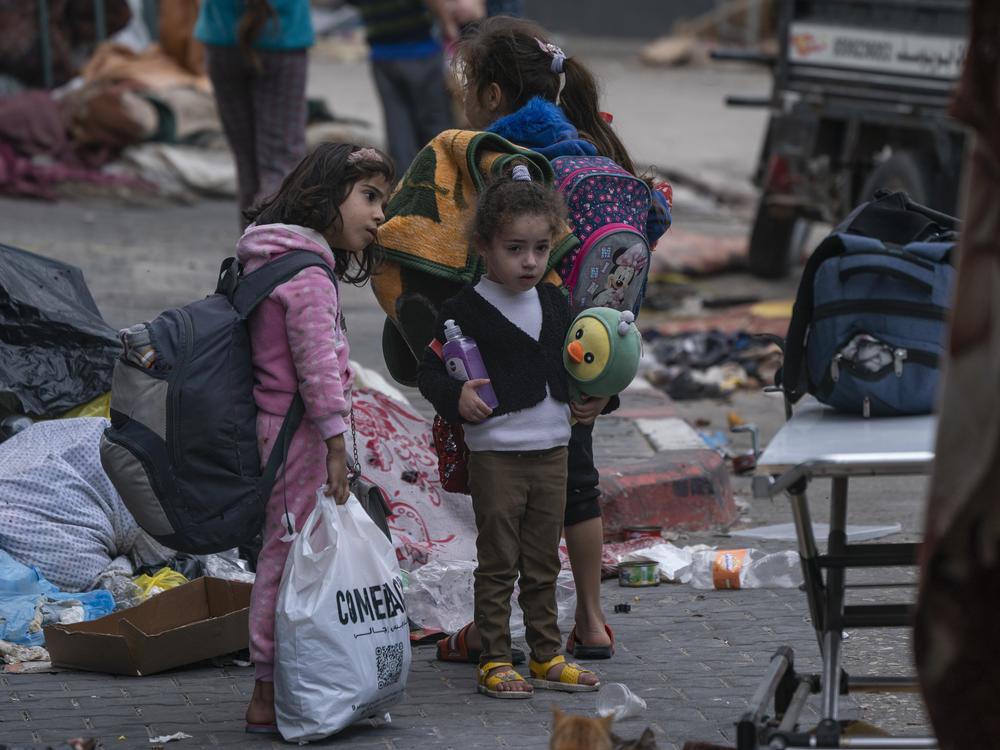Section Branding
Header Content
Nearly 120 million people were displaced around the world in 2023, UNHCR report says
Primary Content
Almost 120 million people worldwide were forcibly displaced in 2023, the 12th year in a row that figure has risen, according to a new report by the United Nations' refugees agency.
That means 1 in 69 people on the planet have been forced from their homes, either displaced to other parts of their own country, or across an international border. Just a decade ago, that comparable ratio was just 1 in 125, meaning the proportion of the global population has almost doubled.
There are multiple factors driving these annual increases, Kelly Clements, the deputy high commissioner for the U.N. refugee agency, UNHCR, told NPR. "We've got wars and conflicts that wage on without a solution in places like Afghanistan, Syria, now Ukraine, Venezuela, Myanmar — those are the protracted situations. And then we have new crises and new wars," says Clements.
The conflict in Gaza, which exploded into the world's consciousness with the Oct. 7 Hamas-led attack in Israel and the Israeli military campaign in Gaza, has displaced almost 2 million Palestinians, according to the U.N. agency that aids Palestinians, UNRWA.
But another vast conflict has roiled the African nation of Sudan for more than a year now, with more than 10 million people having so far been forced from their homes, according to the U.N.'s International Organization for Migration.
Several million Sudanese have sought shelter and security in neighboring countries, where they are officially recognized as refugees and — according to the new UNHCR report — join a global refugee population that is now larger than that of California at 43 million in total.
Many millions of others though have been forced to abandon their homes and seek shelter elsewhere inside Sudan, labeled as internally displaced people, or IDPs.
The UNHCR report shows there were more IDPs worldwide at the end of 2023 — 68.3 million — than there were citizens of the United Kingdom.
Refugees and displaced people often rely on some form of international support for their food or shelter — whether that comes directly from the UNHCR, from other U.N. agencies, from nonprofit groups or directly from foreign governments. But Clements says only very few of them try to travel far from their homes.
"People tend to stay very close to their communities, close to their countries, the majority are in neighboring countries," says Clements, a U.S. citizen who has worked for the United Nations and U.S. State Department for more than 30 years. "The majority of forcibly displaced are in low- and middle-income countries, so these are communities and countries — governments — that don't have enormous capacity to be able to receive tens of thousands, hundreds of thousands, and in some cases, millions of people in addition to meeting their own citizen’s needs."
UNHCR was established following World War II to help with the rehousing of the many millions of people who had been made homeless during that years-long conflict, and it now operates across dozens of countries worldwide.
Over the course of 2023, the total number of people who found themselves forcibly displaced from their home for any one of several reasons — persecution, conflict, violence, human rights violations or public disturbances — increased by 8.8 million.
And Clements says data shows that over that same period of time, 7.7 million people were forced to flee their homes due to climate disasters that are increasingly linked to conflict.
"There are rarely occasions now where you don't have an intersection between conflict and climate," Clements says, pointing to a region of Ethiopia that borders Somalia — long the site of armed conflict — where more than 200,000 people have been forced to abandon their land and livelihoods amid a multiyear drought. "In those circumstances where you find people displaced because of conflict and war," Clements says, "there are also those exacerbating circumstances."
The agency drew on its own operational data, as well as numbers provided by governments and nonprofit organizations, to inform the annual report that is designed to examine global trends in forced displacement.
"Forced displacement is one of the global challenges of our time," Clement says, adding that it requires the international community to work together to address it and support efforts to alleviate the suffering of those displaced. "If we have that kind of international cooperation, we have a chance of being able to address this," she says.
But in the first four months of this year, UNHCR estimates that the number of people forcibly displaced increased worldwide at a rate of almost a million a month.



